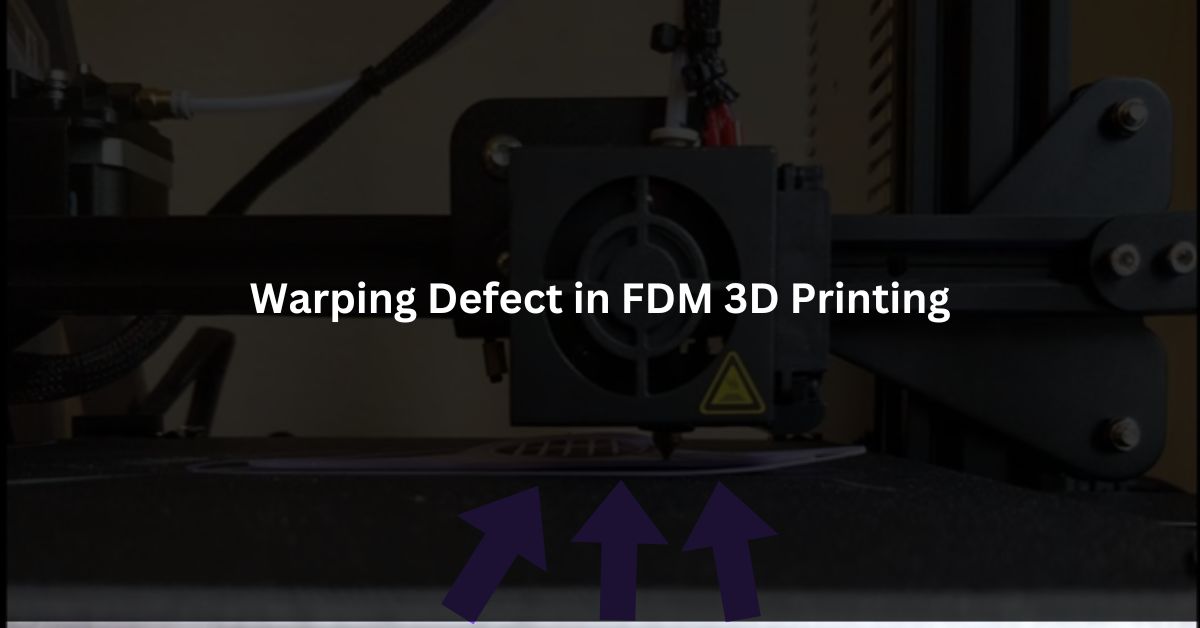While FDM is effective and widely accessible, it is not without its challenges. One common issue that many people face is warping in 3d printing. Warping can ruin a print, making it look distorted or unusable.
In this blog post, we will explore what warping is, why it happens, and how you can prevent it.
What is Warping in 3D Printing?
Warping is a defect that occurs when the corners or edges of a 3D printed object start to lift or curl upwards. Instead of the object sticking flat to the build plate, the material begins to warp or bend, leading to a deformed print. This issue is particularly common in large prints or when using certain types of filament, like ABS (Acrylonitrile Butadiene Styrene).
Warping also happens with PLA filaments but it can be handled or avoided completely.
Why Does Warping Happen in 3D Printing?
Warping usually happens because of uneven cooling during the printing process. When the hot filament is laid down by the printer, it cools and contracts. If the cooling happens too quickly or unevenly, it can cause the bottom layers of the print to pull upwards, away from the build plate. This results in the corners or edges lifting, leading to warping.
Some common factors that contribute to warping include:
- High Printing Temperature: If the print temperature is too high, the filament may not adhere properly to the build plate, increasing the risk of warping.
- Inadequate Bed Adhesion: If the print does not stick well to the build plate, the bottom layers may lift during cooling.
- Cooling Too Quickly: If the print cools too fast, the layers may shrink unevenly, causing warping.
- Large or Flat Prints: Larger prints or prints with wide, flat surfaces are more prone to warping due to the increased surface area.
How to Prevent Warping in 3D Printing?
Thankfully, there are several strategies you can use to reduce or prevent warping in your FDM 3D prints:
- Use a Heated Bed: A heated build plate helps to keep the bottom layers of the print warm, reducing the chances of warping. Make sure to set the bed temperature according to the filament manufacturer’s recommendations.
- Improve Bed Adhesion: Using adhesive solutions like glue sticks, painter’s tape, or specialized adhesives can help your print stick better to the build plate. Some people also use a brim or raft, which adds extra material around the base of the print to help it stick.
- Control the Cooling Process: Avoid cooling the print too quickly by turning off the cooling fan for the first few layers. You can gradually increase the fan speed as the print progresses.
- Use an Enclosure: Printing in an enclosed space can help maintain a consistent temperature around the print, reducing the chances of warping.
- Choose the Right Filament: Some filaments, like PLA (Polylactic Acid), are less prone to warping than others. If warping is a persistent issue, consider using a filament that is less likely to warp.
Conclusion
Warping can be a frustrating issue, but understanding why it happens and how to prevent it can help you achieve better results with your FDM 3D printer. By using a heated bed, improving bed adhesion, controlling the cooling process, and selecting the right filament, you can reduce the chances of warping and create high-quality prints. With a little practice and patience, you’ll be able to overcome this common challenge and enjoy the full potential of 3D printing.
Happy Printing!
Defects in FDM 3D Printing
3D Printers In Your City:
3D Printing Services In Your City (Prototyping Service):
